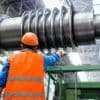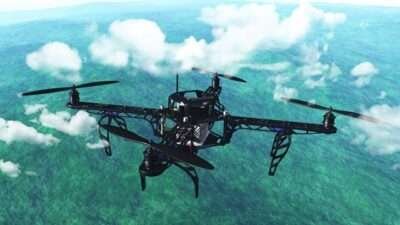From the creation of the P25 network to various changes in technology, there is a lot to know about fire responder radios. If you’re interested in learning more about fire responder radios, below are some facts to help you learn more! These are the facts about fire responder radios that you should know.
P25 Radio Networks:
Fire responders use a specialized type of radio known as P25 radio network. The P25 is specifically designed for the public safety sector and is designed to meet the stringent requirements of this sector. The P25 radio network is a joint project between multiple manufacturers who have produced compatible radios over time, providing interoperability amongst different responders during an emergency situation.
In addition to two-way communication, they also have the ability to share data. Data shared includes GPS location, voice messages, and text. This two-way communication allows responders to share information quickly and efficiently during an emergency situation.
Changes in Technology:
The technology used for fire responder radios has changed over time since its implementation in 1953. New features like encryption, digital signal processing, frequency hopping, and trunking have been added to the radios to improve their communication abilities.
Encryption has been added to the radios to protect sensitive information from being intercepted by unauthorized persons. Digital signal processing is used to reduce noise and improve audio clarity, which helps responders communicate more clearly in an emergency situation. Frequency hopping makes it harder for someone to jam a radio signal, while trunking allows multiple users to use one frequency.
Safety Features:
In addition to the changes in technology, fire responder radios have also been designed with safety features. These features include emergency alarm buttons, volume control, and tone signaling. The emergency alarm button allows responders to send a distress signal if needed during an emergency situation. Volume control helps responders adjust their sound level for various conditions like loud environments. Tone signaling allows responders to send out a specific tone that can be used to indicate the type of emergency situation they’re facing.
Special Lingo:
You might have heard fire responder radios using special lingo. This is because they use a specific set of codes and phrases to communicate with each other. For example, 10-4 means “Yes”, while 10-20 would be used to indicate location. Understanding the special lingo used by fire responders helps people understand what’s being said during an emergency situation.
However, more importantly, these codes shorten the amount of time it takes to communicate and make decisions during emergencies.
Advanced Dispatch Systems:
In addition to the changes in technology, fire responders now have access to advanced dispatch systems. These systems allow responders to receive and send messages quickly and accurately. This is especially important during an emergency situation as it can help save lives by allowing responders to respond more quickly.
Advanced dispatch systems can also provide detailed information, like the location of the incident weather conditions, and traffic patterns. This information can help responders better plan and coordinate their activities during an emergency.
Conclusion:
From the creation of P25 radio networks to changes in technology and safety features, there is a lot to know about fire responder radios. Understanding these facts helps people better understand how fire responders communicate with each other during an emergency situation, allowing them to respond more quickly and efficiently.
With the right knowledge and training, responders can be prepared for any emergency situation that may arise. Knowing about fire responder radios is an important part of being a responsible and effective responder. As technology continues to evolve, so does the need for responders to stay up-to-date with their knowledge of the latest tools available.









